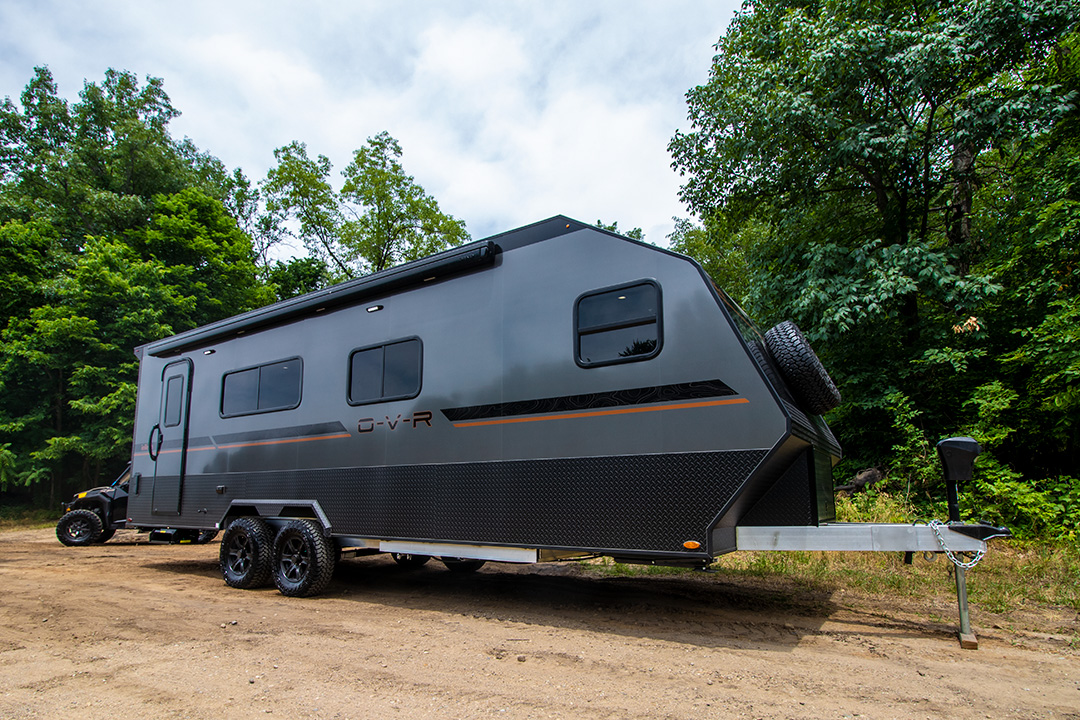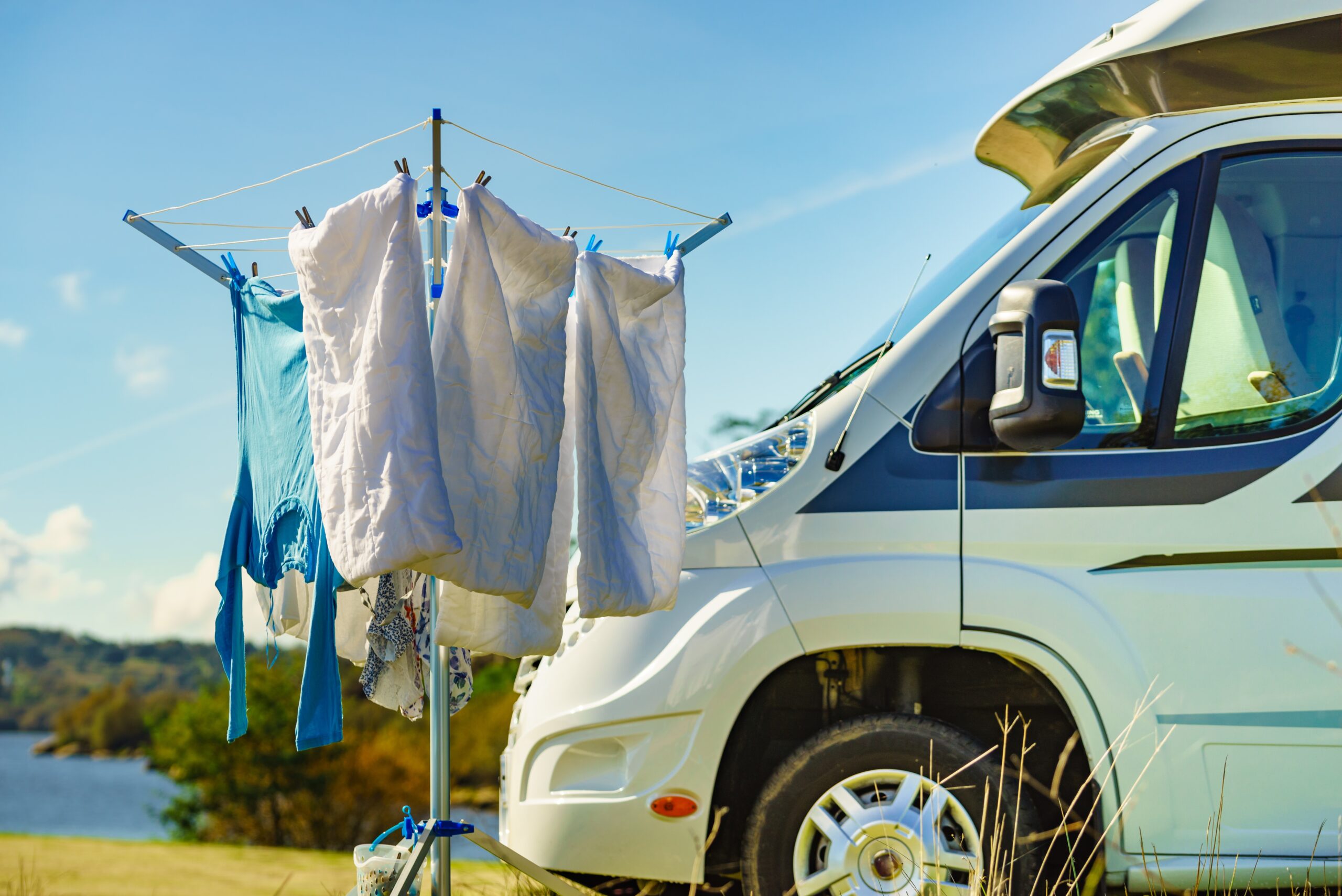There are six national parks in Wyoming:
- Yellowstone National Park
- Devils Tower National Monument
- Fort Laramie National Historic Site
- Fossil Butte National Monument
- Grand Teton National Park
- and the John D. Rockefeller, Jr. Memorial Parkway.
Camping is available in five, so read on to learn about the fascinating experiences awaiting you at each park and the amenities for camping.
Yellowstone National Park
The big Kahuna of Wyoming’s National Park, Yellowstone is actually located across Wyoming, Montana, and Idaho. Yellowstone is the first National Park, created March 1, 1872, and is known for its over 10,000 hydrothermal features that come from the 3,500-square-foot wilderness sitting atop a volcanic hot spot.
This has created hot springs, mud pots, fumaroles, and some 500-700 active geysers each year. Over half of the world’s active geysers are found here.
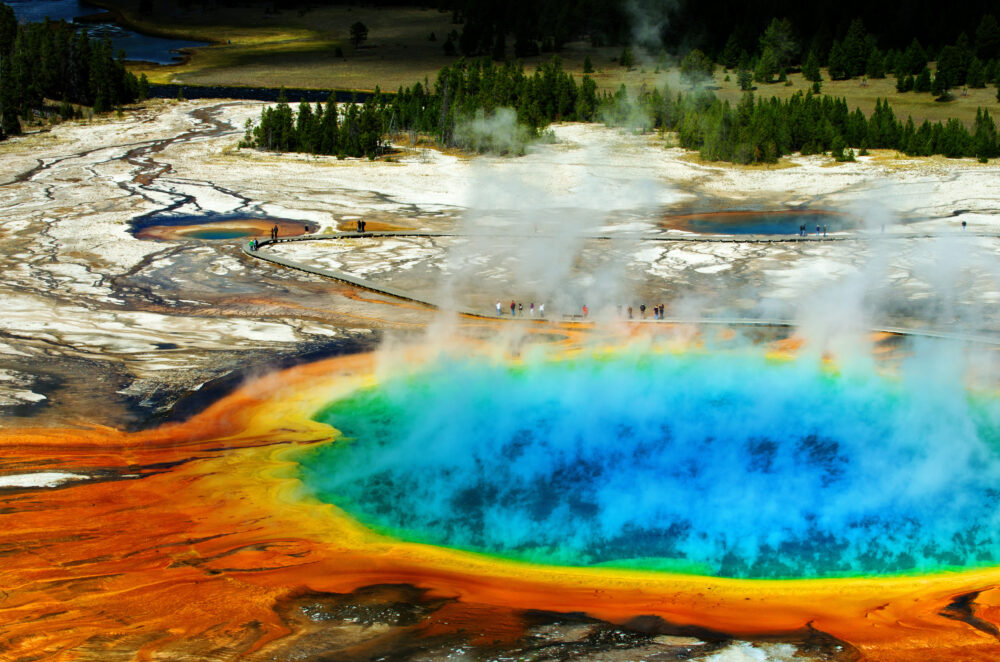
Of course, the most well-known of the geysers—and what no visit to Yellowstone would be complete without—is Old Faithful, one of six geysers in the park whose eruptions can be predicted. Other activities are available in the park year-round such as hiking, fishing, boating, skiing, and snowshoeing.
Yellowstone has 12 campgrounds with over 2,000 sites; five of which take reservations and seven of which are first-come, first-served.
Fishing Bridge RV Park has 340 sites, all with electrical hookups as well as a camp store, laundry, flush toilets, and hot showers.
Devils Tower National Monument
Devils Tower is an awe-inspiring geologic feature as well as a place of storied history. It is considered a sacred spot by Northern Plains Indians and indigenous people, who have lived around the Tower for thousands of years.
During the late 1800s, white settlers and explorers came to the area who protected the Tower and its surrounding area, using it as a summer gathering place. Today, the Tower is used by rock climbers climbing the hundreds of parallel cracks in the monument. There are many perspectives of the Tower and hikes around it offer some amazing views.
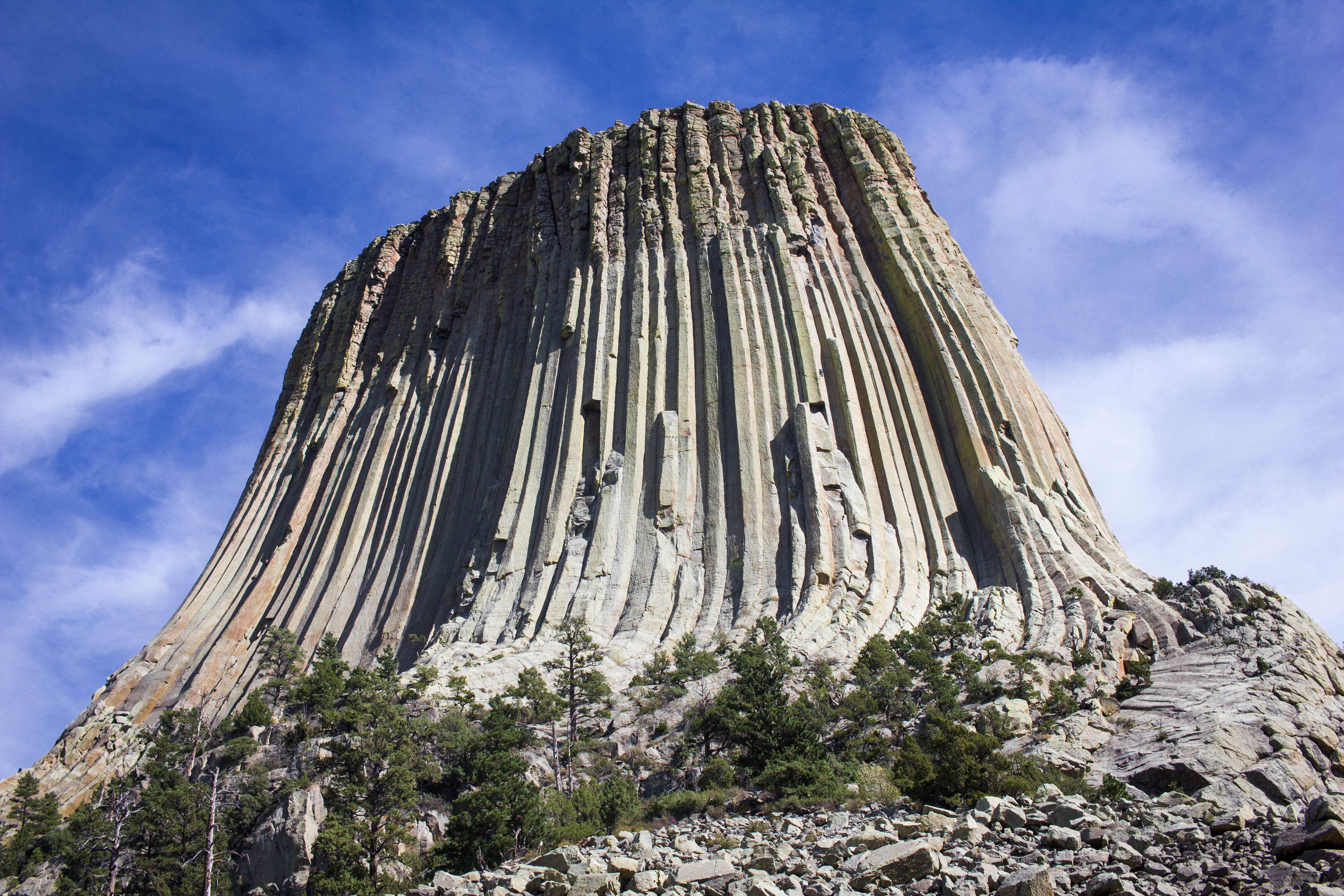
Camping is available at the Belle Fourche River Campground, open seasonally on a first-come, first-served basis. The campground is a 2-loop, 46-site campground with 4 accessible sites and 3 group sites available. Potable water is available as well as restrooms, picnic tables, and shelters. There are 43 pull-through sites with room for RVs up to 35 feet (no hookups).
The park has a visitor center and bookstore open seasonally, while the monument itself is open 24 hours a day, every day of the year.
Fossil Butte National Monument
Called “America’s aquarium in stone”, Fossil Butte has some of the world’s best-preserved fossils in the flat-topped ridges of southwestern Wyoming’s sagebrush desert. From fish to insects to plants and more, there are a variety of preserved fossils for viewing as well as hiking trails and ranger-led activities at the monument.
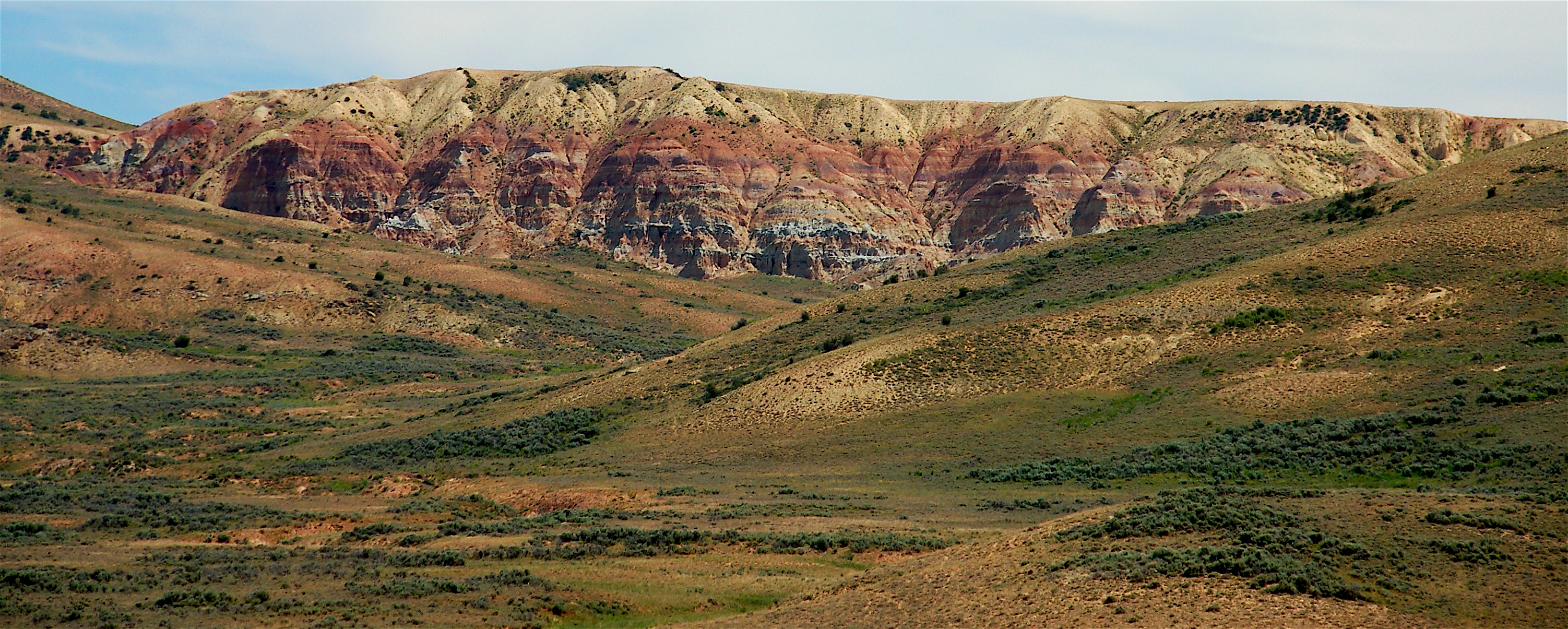
The fossil record preserved here in the Fossil Basin is incomparable to anywhere else in the world. The skeletons were preserved due to the quiet water, fine-grain lake sediment, and water conditions that kept scavengers from eating the remains of animals.
While there is no camping inside Fossil Butte National Monument, dispersed camping is available on surrounding BLM and Forest Service Lands where there are certain rules and guidelines to follow. Camping is limited to 14 days within a 30-mile radius in a 28-day period.
A visitor’s center is located in the monument and other goods and services are available in nearby Kemmerer and Diamondville.
Grand Teton National Park and John D. Rockefeller, Jr. Memorial Parkway
Grand Teton National Park is named for the beautiful Teton Range mountains it was created to protect. Over 200 miles of trails exist in the park for hiking, biking, and horseback riding and one can also fish, boat, climb, or go backcountry camping in the park. Open 24 hours a day, year-round, the park is an outdoor recreation haven in both the summer and winter.
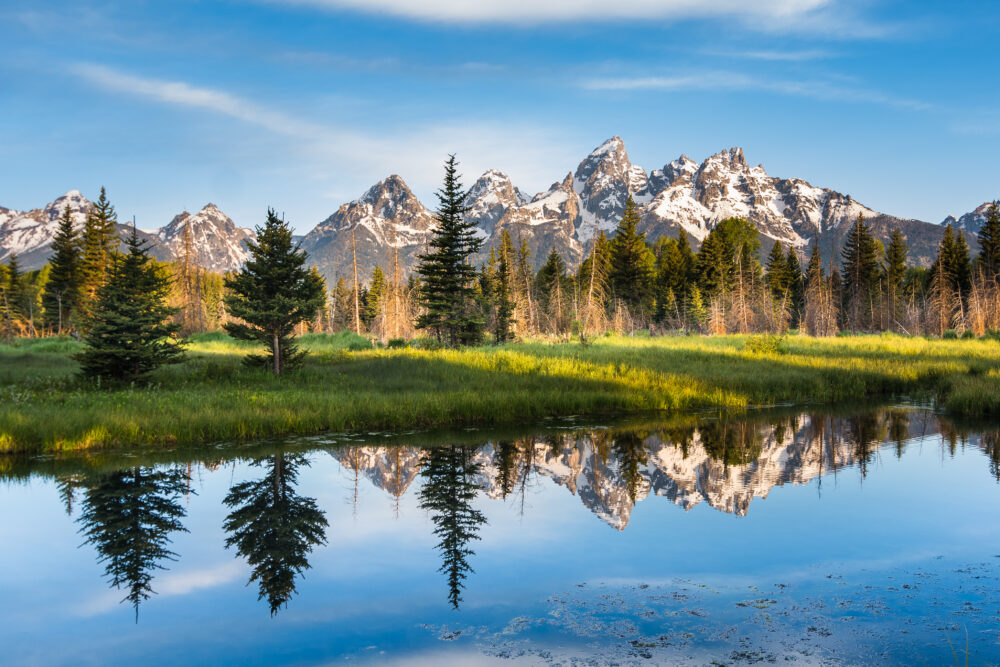
There are six campgrounds near Grand Teton: Colter Bay, Gros Ventre, Headwaters, Jenny Lake (tent only), Lizard Creek, and Signal Mountain. Colter Bay has 112 sites and Headwaters has 100 trailer and 75 tent sites at Flagg Ranch, located within the John D. Rockefeller, Jr. Memorial Parkway.
Signal Mountain has one site with full hook-ups and 24 sites with electric hook-ups. Fees and amenities vary for each campground so it is recommended you visit each campsites individual website. Primitive winter camping is available at Colter Bay from Dec 1-April 15 and backcountry camping is allowed throughout the year.


